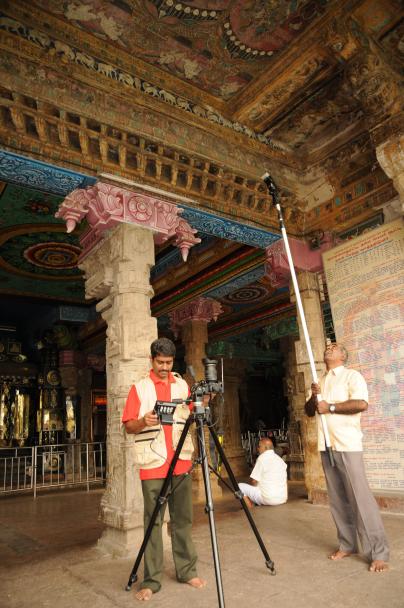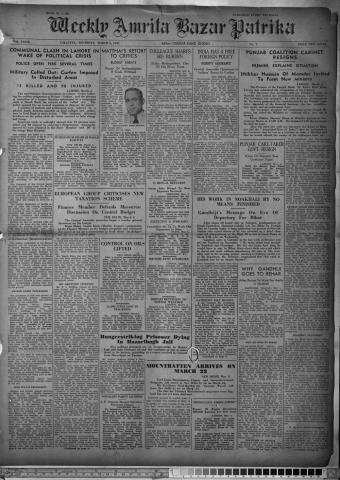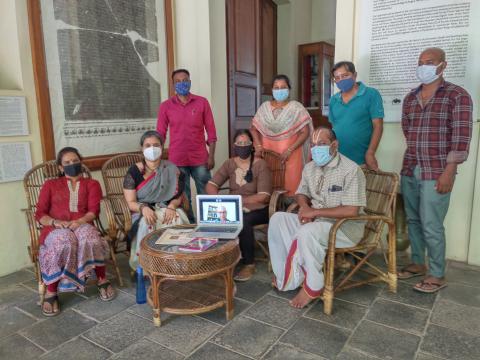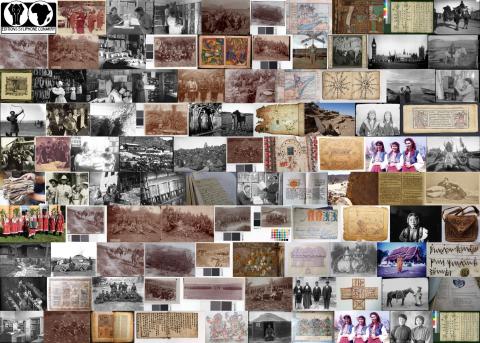
Aims and objectives
Tamil Nadu has a long and rich history of painting which is unique to this state to a certain extent, with paintings on cloth, leather, ceramics and other mediums. Murals and ceramic art that survived the vicissitudes of time represent the past history of different dynasties. Tamil Nadu temples have murals representing historical epics such as Ramayana and Mahabharatha.
These exquisite temple murals belong to various dynasties such as the Pallava (2nd to 9th century), the Chola (9th to 13th century), the Nayak (16th to 18th century) and the Maratha (17th to 19th century). In addition to the temple art a few palaces such as Ramalinga Vilas at Ramanathapuram and the Padmanabhapuram in Kanyakumari district have murals.
Many of these art works, dating from the 2nd to 19th century, have been wiped out wholly or partially through such things as vandalism, south Indian weather condition, by burning camphor as part of the ritual practice. No conscious preservation efforts have been undertaken, putting this temple art in a vulnerable situation. The rich cultural heritage of the temple art is deteriorating on a daily basis. These murals will shed light on the art history, heritage and the nature of the society and its function if is protected. They are exquisite and facing extinction.
In recent times, sand-blasting in temples has become a regular practice, damaging sculptures, paintings and inscriptions. In the Varadarajaswamy temple at Kanchipuram, a Nayaka period mandapam with pillars filled with carvings of dancers, musicians, floral motifs and inscriptions was pulled down and haphazardly rebuilt, and hundreds of the Vijayanagara period murals are in ruins. In the name of renovation, murals at the Tiruvellarai temple, depicting episodes from the ‘Ramayana,' are no longer there. Paintings of the Nayak period, which portrayed the life of the Vaishnavite saint, Nammazhwar, at the temple in Tirukkurugur, near Adichanallur, Tirunelveli are now vanished.
The above examples clearly show the danger of vandalism for this valuable temple art. This pilot project is important for an area where little work has been done to date. Digitising these murals at the earliest opportunity will enable art historians and others to carry out research and for the general public to relish their heritage.
The IFP has wide experience of documenting south Indian temples and their murals since 1956 and its archives are useful for individuals to carry out research, temple and government authorities to rebuild temples, and serves as a resource centre to document statues now stolen. A proper and systematic digital documentation and preserving them is needed to serve as a reserve.
This pilot project will digitise exquisite murals in vulnerable condition, in four temples and one rock art site: Madurai Meenakshi temple; Kallalagar temple, Alagarkovil; Siva temple Tittakudi; Vishnu temple, Adiyamankottai; and Jain cave of Tirumalai. A detailed database will be prepared with descriptions for the documented images. The project will also compile a detailed list of other temples where such murals are available, with their conditions and the permissions needed to do the digitisation. This will be used as the framework for a future major project. This work will pave the way for future generations to understand historically important temple art and provide opportunities for research.
Outcomes
The records copied by this project have been catalogued as:
- EAP692/1 Alagarkovil Kallagar Temple - Temple Art [17th Century]
- EAP692/2 Madurai Meenakshi Sundareswara temple [16th Century]
- EAP692/3 Narasingampatti - Chitrachavadi [17th Century]
- EAP692/4 Adiyamankottai, Chenraya Perumal temple [17th Century]
- EAP692/5 Tirumalai (Jain complex)
Due to the cyber-attack on the British Library in October 2023, the archives and manuscripts database is currently inaccessible and we are unable to provide links to the catalogue records for this project.




